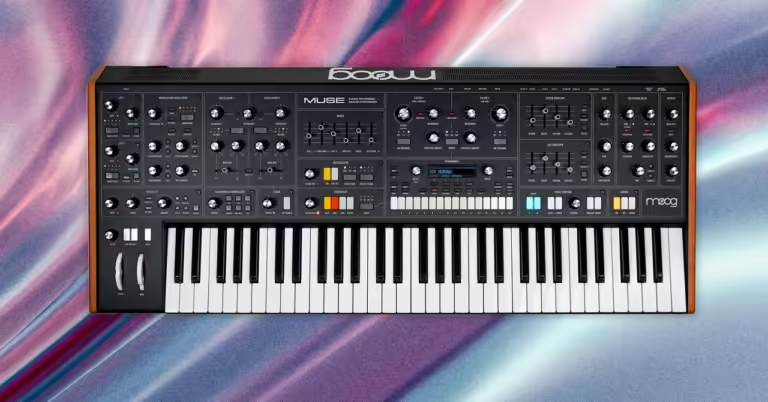2018, Moog The company introduced its first analog polysynth in nearly 30 years, the Moog One, a huge, intimidating monster designed to allow musicians to play multiple analog synth voices simultaneously. Even more intimidating than its control-packed front panel was its price. When first released, Moog One was available in 8- and 16-voice models, priced at $5,999 and $7,999, respectively. The Moog One 8 was then discontinued, and the price of the 16-voice version rose to $10,000, leaving a huge gap in Moog’s analog synth lineup.
Muse is an attempt to fill that gap and make Moog polysynths more accessible. This $3,499, eight-voice bi-timbral analog machine has two oscillators, a modulation oscillator, three low frequency oscillators (LFOs), two filters, two envelopes, digital delay, and aftertouch (not polyphonic). There are other synths out there with more features, but this one has a pretty solid core with plenty of flexibility. And there’s one thing Muse has over the others: it’s Moog.
Classic Sound
There’s something special about the sound of a Moog synthesizer, and while there are plenty of synthesizers that do a great job of recreating the iconic Moog bass sound, nothing comes close to the real thing.
I was reminded of this many times during my testing, playing the Moog Muse side-by-side with a variety of instruments, from the Korg Monologue and Minilogue XD to the Novation BassStation II and Arturia Polybrute 12. There’s something about the sound of the Moog oscillators and their iconic ladder filters that’s bigger and warmer than any instrument I’ve played before.
Photo: Moog
Part of the reason for this is the special properties of its oscillators, which are based on the Minimoog Voyager: they’re not just analog, they’re aggressively analog. Whereas other modern analog polysynths treat the natural analog drift as something to tweak to your liking, and do their best to maintain perfect tune, Muse leans into its natural imperfections, giving it plenty of character and body.
With eight voices available, it’s easy to assume that the Muse should be used to play chords and pads, but don’t ignore the bass on this synth. The bass is huge, outdoing pretty much every other polysynth I’ve ever played, especially when you stack all eight voices in unison mode. This synth may have been made with pads and keys sounds in mind, but it’s also a monster for basses and leads, just as you’d expect from Moog.
Of course, there are plenty of cheaper options for powerful mono synths out there, and to be worth the price, Muse has to offer a much more complex and wide range of sounds. Thankfully, it excels at epic pads, cinematic strings, and pluckable keys, too.
The sound shaping options here are very powerful: a dedicated modulation oscillator can control pitch, filter or pulse width, or even be turned into a third audio-rate oscillator – though its tuning isn’t as stable as the main oscillator, making it perfect for creating nasty dissonant sounds.
There’s also ring modulation and FM (frequency modulation) circuits for turning that analog warmth into metallic bell and pluck sounds, plus an overload circuit for adding some grit. Plus, there are three LFOs and two envelopes, all of which can be plugged into a 16-slot modulation matrix to create complex sounds, from chaotic EDM basses to long, evolving soundscapes.

